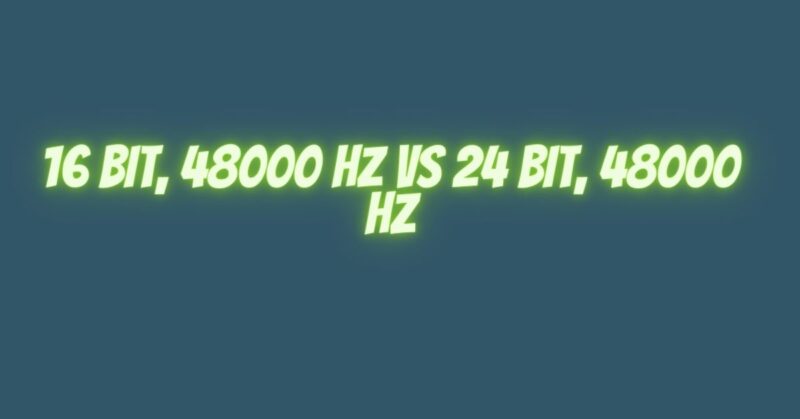16 bit, 48000 Hz and 24 bit, 48000 Hz are two different audio formats that differ in their bit depth. Bit depth refers to the number of possible values that can be used to represent the amplitude of a sound wave.
Bit depth
16 bit audio has a bit depth of 16, which means that it can represent 2^16 = 65,536 different values. 24 bit audio has a bit depth of 24, which means that it can represent 2^24 = 16,777,216 different values.
The higher bit depth of 24 bit audio allows it to capture more detail and nuance in a sound wave. This can be especially important for recording and reproducing sounds with a wide dynamic range, such as classical music or live performances.
Sample rate
Both 16 bit and 24 bit audio can be recorded at different sample rates. The sample rate refers to the number of times per second that a sound wave is sampled.
48,000 Hz is a common sample rate for both 16 bit and 24 bit audio. It is the same sample rate that is used for CDs and most digital audio formats.
Which format is better?
Whether 16 bit or 24 bit audio is better depends on your needs and preferences.
If you are recording or reproducing music with a wide dynamic range, or if you are using high-end audio equipment, then 24 bit audio may be a good choice.
If you are recording or reproducing music for general playback, or if you are limited on storage space or processing power, then 16 bit audio may be a good choice.
Both 16 bit and 24 bit audio are high-quality audio formats. The best format for you will depend on your specific needs and preferences.
If you are unsure which format to choose, it is always best to consult with a professional audio engineer.
Here are some additional things to consider when choosing between 16 bit and 24 bit audio:
- File size: 24 bit audio files are larger than 16 bit audio files. This is because they contain more information.
- Compatibility: Not all audio devices and software support 24 bit audio. If you are unsure whether your device or software is compatible, it is best to check with the manufacturer.
- Personal preference: Ultimately, the best way to decide which format is right for you is to listen to both and see which one you prefer.


